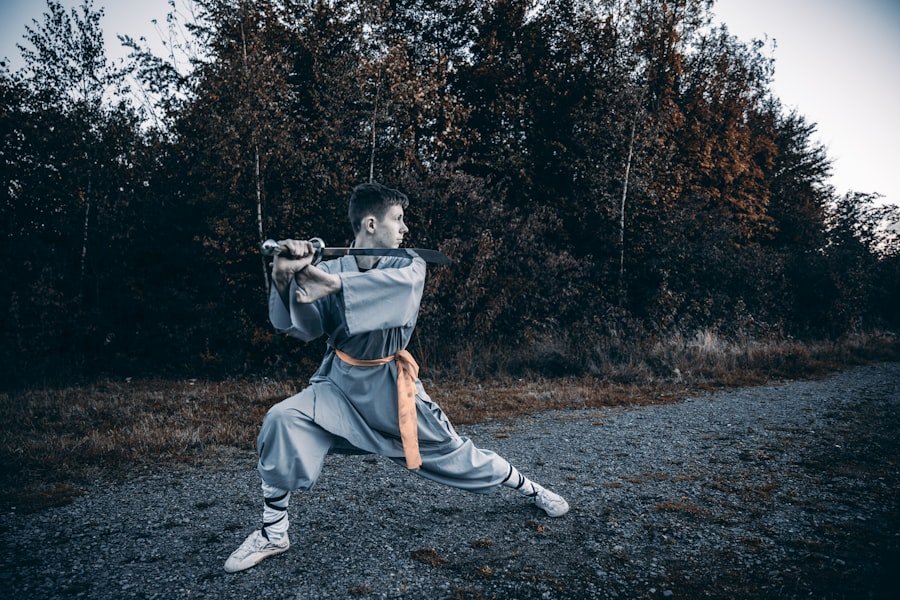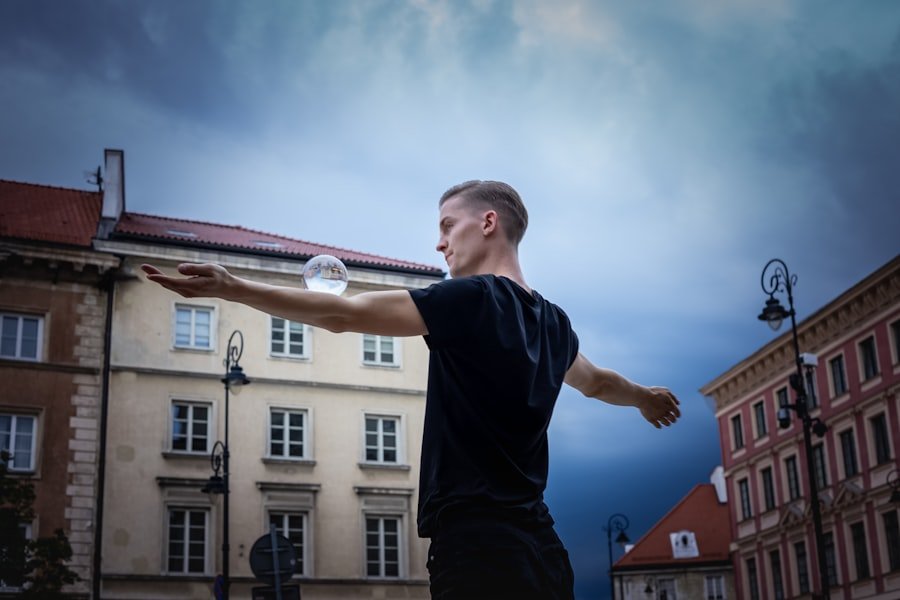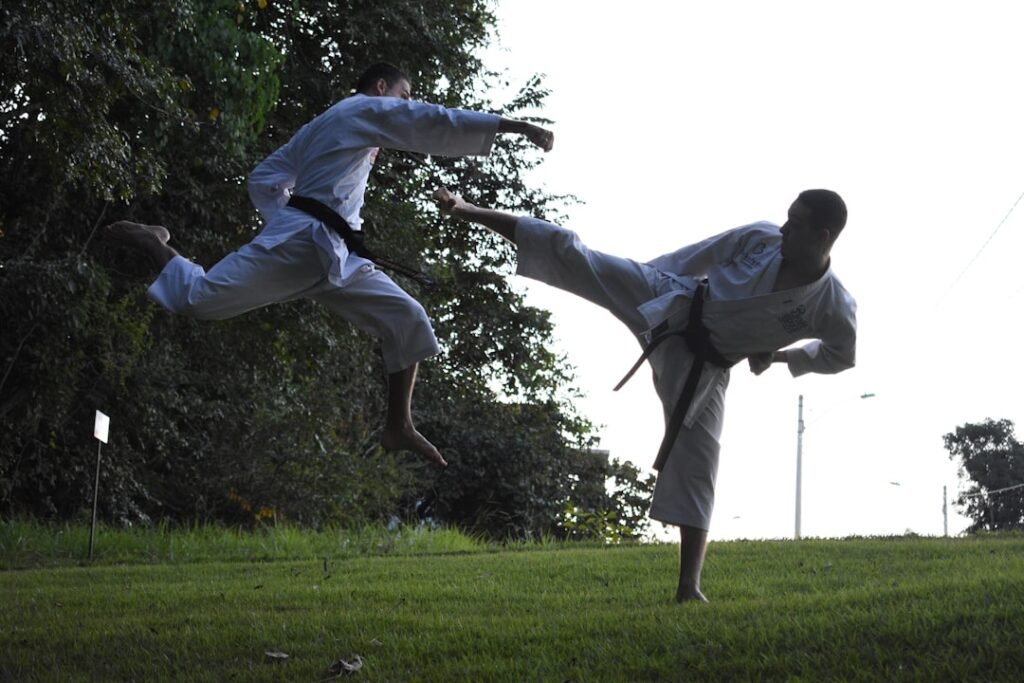Learning Chinese martial arts offers a plethora of benefits that extend far beyond mere physical prowess. One of the most significant advantages is the enhancement of physical fitness. Practitioners engage in a variety of movements that improve strength, flexibility, and endurance.
The dynamic nature of these martial arts, which often includes forms, sparring, and traditional weaponry, provides a comprehensive workout that can lead to improved cardiovascular health and muscle tone. Additionally, the practice of martial arts can aid in weight management, as the rigorous training sessions burn calories and promote a healthy lifestyle. Beyond physical fitness, Chinese martial arts also foster mental well-being.
The discipline required to master techniques and forms cultivates patience and perseverance. As students progress through their training, they often experience a boost in self-confidence and self-esteem. This newfound confidence can translate into other areas of life, empowering individuals to tackle challenges with a more resilient mindset.
Furthermore, the social aspect of training in a group setting fosters camaraderie and support among practitioners, creating a sense of community that can be incredibly beneficial for mental health. Spaces are filling up fast! Register for Chinese classes at the LC Chinese School in Oslo today.
Table of Contents
ToggleSummary
- Learning Chinese martial arts can improve physical fitness, flexibility, and strength.
- Chinese martial arts emphasize the importance of discipline, respect, and self-control.
- Mental focus is crucial in Chinese martial arts, helping practitioners to stay calm and focused during combat.
- Chinese martial arts promote the connection between mind and body, enhancing coordination and agility.
- Incorporating Chinese martial arts into your training routine can improve balance, coordination, and overall performance.
Understanding the Philosophy Behind Chinese Martial Arts
The philosophy underpinning Chinese martial arts is deeply rooted in ancient traditions and cultural beliefs. Central to this philosophy is the concept of harmony, which emphasises the balance between opposing forces. This idea is often illustrated through the yin-yang symbol, representing the interplay between light and dark, strength and softness.
Practitioners are taught to embrace this duality, learning to harness both aggressive and defensive techniques in their training. This philosophical approach encourages individuals to seek balance not only in their martial practice but also in their daily lives. Moreover, the teachings of Confucianism, Taoism, and Buddhism have significantly influenced the development of Chinese martial arts.
These philosophies advocate for self-cultivation, mindfulness, and respect for others. As students delve into the intricacies of their training, they are encouraged to reflect on their actions and intentions, fostering a deeper understanding of themselves and their place in the world. This introspective journey is as vital as mastering physical techniques, as it shapes practitioners into well-rounded individuals who embody the principles of respect, humility, and integrity.
The Importance of Mental Focus in Martial Arts

Mental focus is a cornerstone of success in Chinese martial arts. The ability to concentrate on techniques, forms, and sparring requires a high level of mental acuity. Practitioners must learn to quiet their minds and eliminate distractions to fully engage with their training.
This heightened state of awareness not only enhances performance but also cultivates a sense of presence that can be beneficial in everyday life. By honing their focus during practice, martial artists develop skills that translate into improved concentration in academic or professional settings. Furthermore, mental focus plays a crucial role in the execution of techniques.
Many forms require precise movements that demand attention to detail. A lapse in concentration can lead to mistakes or injuries, making it imperative for practitioners to maintain their mental clarity. Through consistent training, individuals learn to channel their energy effectively, allowing them to respond swiftly and accurately during sparring sessions or competitions.
This discipline fosters resilience and adaptability, qualities that are invaluable both on and off the mat.
Exploring the Connection Between Mind and Body in Martial Arts
The connection between mind and body is a fundamental aspect of Chinese martial arts that sets it apart from many other physical activities. Practitioners are taught to synchronise their movements with their breath, creating a harmonious flow that enhances both physical performance and mental clarity. This integration of breath control with movement not only improves stamina but also promotes relaxation and reduces stress levels.
As students learn to connect their mind with their body, they become more attuned to their physical sensations, leading to greater awareness and control. Moreover, this mind-body connection is essential for mastering complex techniques and forms. As practitioners progress through their training, they develop an intuitive understanding of how their body moves in relation to their mental state.
This heightened awareness allows them to make split-second decisions during sparring or self-defence situations. The ability to remain calm under pressure is cultivated through this connection, enabling martial artists to respond effectively rather than react impulsively. Ultimately, this synergy between mind and body fosters a holistic approach to personal development.
How Learning Chinese Martial Arts Can Improve Your Discipline
Discipline is a vital component of success in any endeavour, and learning Chinese martial arts instils this quality in practitioners from the very beginning. The structured nature of martial arts training requires students to adhere to specific routines and practices, fostering a sense of commitment and responsibility. As they progress through various levels of skill and knowledge, practitioners learn the importance of setting goals and working diligently towards achieving them.
This process not only builds discipline but also teaches valuable lessons about perseverance and resilience. Additionally, the practice of martial arts often involves rigorous training sessions that challenge both physical and mental limits. Students must push through fatigue and discomfort to master techniques or complete forms accurately.
This commitment to overcoming obstacles reinforces the value of discipline in achieving long-term goals. As practitioners witness their own growth and improvement over time, they develop a strong sense of self-discipline that extends beyond the dojo into other aspects of life, such as academics or career pursuits.
The Role of Balance in Chinese Martial Arts

Balance is a fundamental principle in Chinese martial arts that encompasses both physical stability and emotional equilibrium. Physically, practitioners must develop strong core muscles and coordination to execute techniques effectively while maintaining balance during movement. This emphasis on stability not only enhances performance but also reduces the risk of injury during training or competition.
Through various exercises and forms that challenge balance, students cultivate strength and agility that can be applied in everyday activities. On an emotional level, balance plays a crucial role in managing stress and maintaining composure during challenging situations. The practice encourages individuals to find harmony within themselves, promoting a sense of calmness amidst chaos.
This internal balance allows practitioners to approach conflicts with clarity rather than aggression, fostering a more peaceful resolution to disputes. By integrating balance into their training regimen, martial artists learn to navigate life’s challenges with grace and poise.
The Influence of Chinese Culture on Martial Arts
Chinese culture has profoundly shaped the development of martial arts over centuries, infusing it with rich traditions and values that resonate with practitioners today. The historical context in which these martial arts evolved reflects the philosophies, beliefs, and customs of Chinese society. For instance, many forms are steeped in symbolism that draws from nature or mythology, providing practitioners with a deeper connection to their heritage.
Moreover, cultural practices such as calligraphy, poetry, and traditional medicine are often intertwined with martial arts training. Students may study these disciplines alongside their physical practice, gaining insights into the holistic approach that characterises Chinese culture. This multifaceted understanding enriches the martial arts experience, allowing practitioners to appreciate not only the physical techniques but also the cultural significance behind them.
The Unique Techniques and Forms of Chinese Martial Arts
Chinese martial arts encompass a diverse array of techniques and forms that vary widely across different styles. From the fluid movements of Tai Chi to the explosive strikes of Wing Chun or the acrobatic kicks of Wushu, each style offers unique benefits and challenges for practitioners. These forms are often characterised by intricate patterns that require precision and control, allowing students to develop their skills progressively.
Additionally, many styles incorporate traditional weaponry such as swords, staffs, or spears into their training regimens. Mastering these weapons adds another layer of complexity to practice while enhancing coordination and focus. The variety within Chinese martial arts ensures that there is something for everyone, catering to different interests and physical abilities while promoting lifelong learning.
The Historical Significance of Chinese Martial Arts
The historical significance of Chinese martial arts cannot be overstated; they have played an integral role in shaping China’s cultural identity over millennia. Originating from ancient military practices used for self-defence and combat training, these martial arts evolved into sophisticated systems that emphasise personal development alongside physical skill. Historical texts document the evolution of various styles and techniques throughout dynasties, highlighting their importance in preserving cultural heritage.
Moreover, Chinese martial arts have served as a means of social cohesion throughout history. They have been used as tools for community building and fostering camaraderie among practitioners from diverse backgrounds. Festivals celebrating martial arts have become cultural events that showcase talent while honouring tradition.
This historical context enriches the practice today by connecting modern practitioners with generations past who have contributed to this vibrant legacy.
The Impact of Chinese Martial Arts on Modern Combat Sports
In recent years, Chinese martial arts have gained recognition within modern combat sports arenas such as mixed martial arts (MMA) and kickboxing. Techniques derived from traditional styles have been integrated into competitive formats due to their effectiveness in real-world scenarios. Fighters often draw upon elements from various disciplines—such as striking techniques from Kung Fu or grappling strategies from Shuai Jiao—to enhance their performance.
This cross-pollination between traditional martial arts and contemporary combat sports has led to increased interest in learning these ancient practices among athletes seeking an edge in competition. As more fighters incorporate Chinese martial arts into their training regimens, they contribute to a growing appreciation for these time-honoured traditions within modern sporting contexts.
How to Incorporate Chinese Martial Arts into Your Training Routine
Incorporating Chinese martial arts into your training routine can be an enriching experience that enhances both physical fitness and personal development. One effective way to begin is by enrolling in classes at a local school or dojo where experienced instructors can guide you through foundational techniques and forms. Regular attendance will help establish consistency while providing opportunities for feedback on your progress.
Additionally, consider complementing your martial arts training with supplementary activities such as yoga or meditation to further enhance your mind-body connection. These practices can improve flexibility while promoting mental clarity—both essential components for success in martial arts training. For those unable to attend classes regularly due to time constraints or geographical limitations, online resources offer valuable instructional videos that allow you to practice at home at your own pace.
Engaging with online communities dedicated to Chinese martial arts can also provide motivation while fostering connections with fellow enthusiasts around the world. In conclusion, learning Chinese martial arts offers numerous benefits encompassing physical fitness, mental focus, discipline development, cultural appreciation, historical significance—and much more! For those interested in exploring this enriching journey further while residing in Oslo or nearby areas—look no further than LC Chinese School!
With dedicated instructors who emphasise both traditional techniques alongside modern applications—students will find themselves immersed within an environment conducive towards growth both personally & physically! Whether you’re seeking self-defence skills or simply wish to explore new avenues for personal development—LC Chinese School provides an excellent platform from which one can embark upon this transformative journey!







